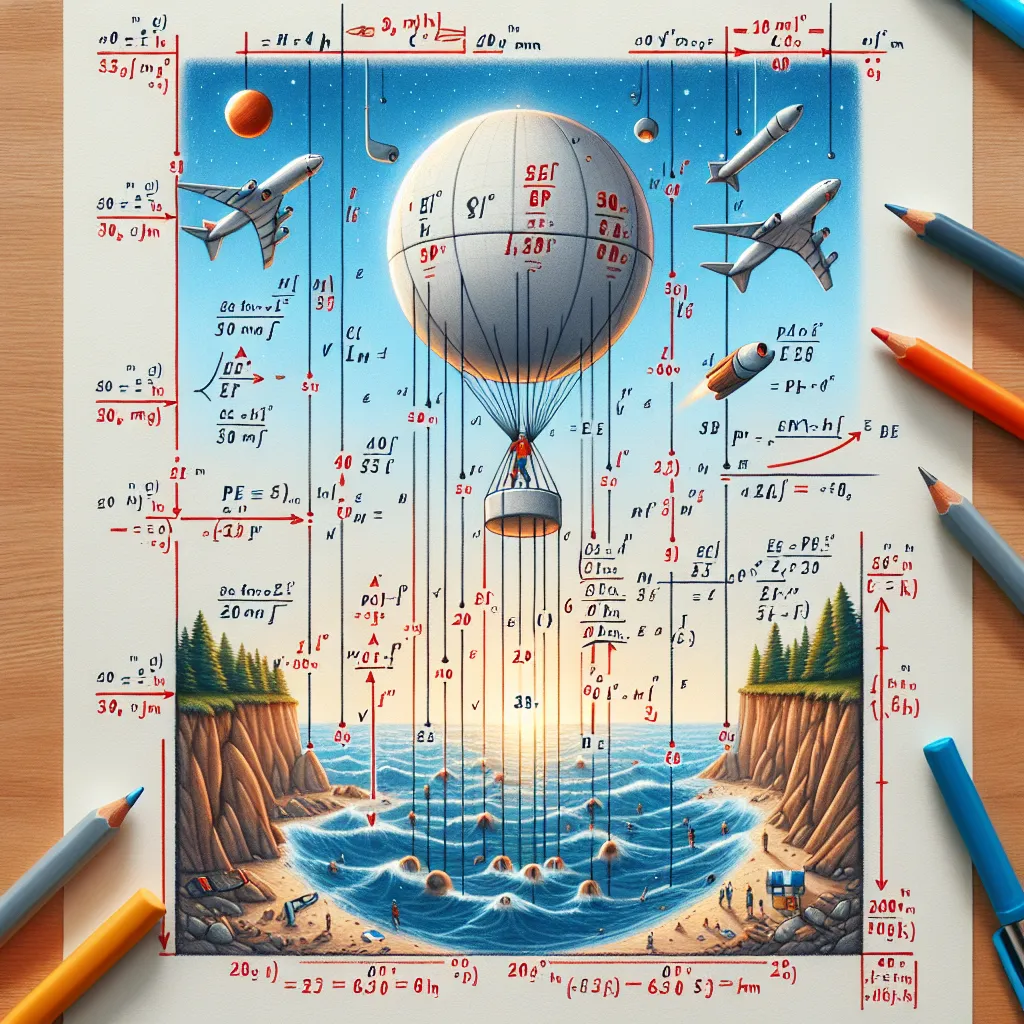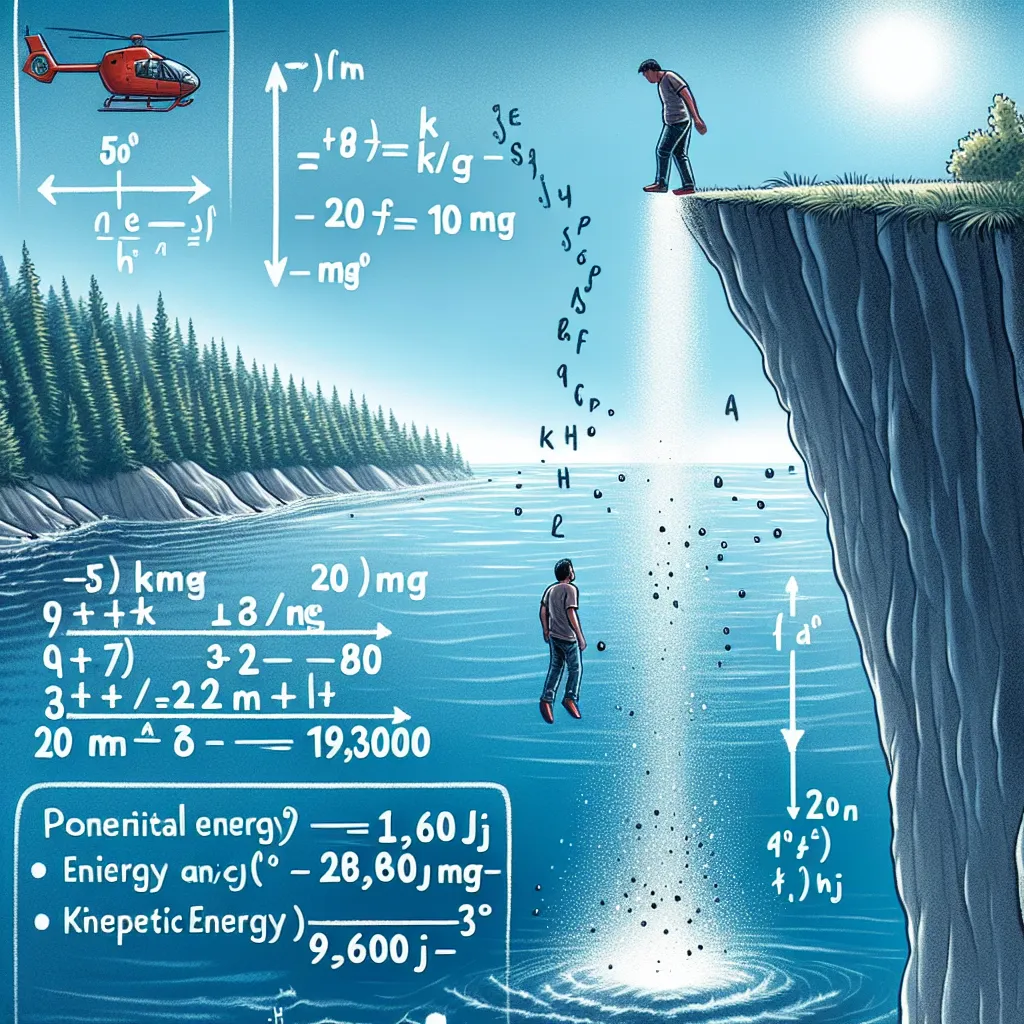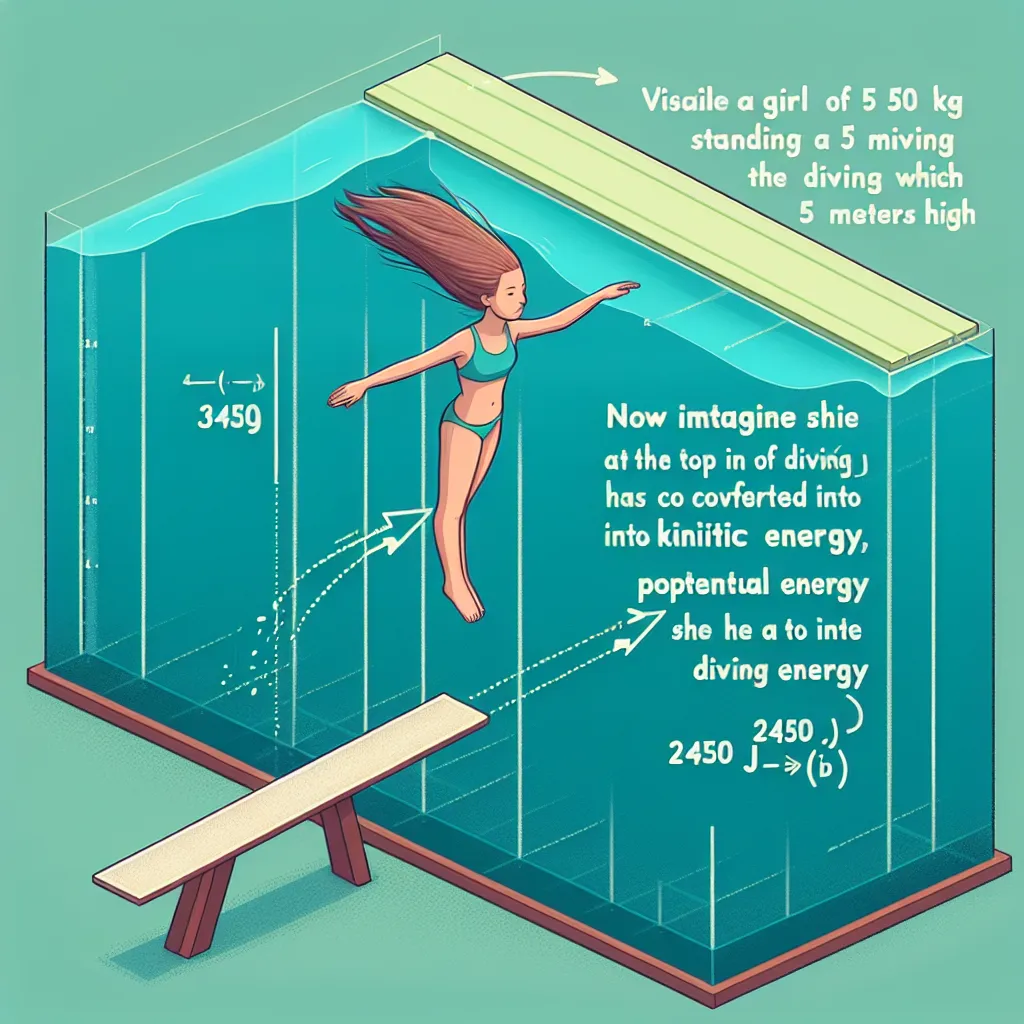Ask AI on The Internet
Question: A 100 Kg man is diving off a 50-meter cliff. What is his kinetic energy when he is 20 meters from the water?
The kinetic energy (KE) of an object in motion can be computed using the formula: KE = 1/2MV^2, where M is the mass and V is the velocity of the object. However, the energy of a falling object (like the man diving off the cliff) is best understood in terms of potential energy being converted into kinetic energy. When the man is at the top of the cliff before jumping, all energy is potential energy (PE), which can be calculated using the formula: PE = MGH, where: M - mass of an object (in kg) G - acceleration due to gravity (approx 9.81 m/s^2 on Earth) H - height above the ground (in meters) In this case, as the man falls down the cliff, the potential energy decreases while the kinetic energy increases. When the man is 20 meters from the water (i.e., fallen 30 meters from the cliff), we can use the same equation to find out his potential energy: PE = MGH = 100 kg * 9.81 m/s^2 * 20 m = 19620 J (Joules) By the Law of Conservation of Energy, the total energy before and during the fall is the same. So, when the man was at the top of the cliff, his potential energy was: PE = MGH = 100 kg * 9.81 m/s^2 * 50 m = 49050 J Therefore, his kinetic energy when he is 20 meters above the water is the initial potential energy minus the remaining potential energy: KE = initial PE - remaining PE = 49050 J - 19620 J = 29430 J So the man's kinetic energy 20 meters from the water is approximately 29430 Joules. Note that we're ignoring other forces like air resistance, which could slightly alter his speed and kinetic energy.
A new large language model has been made available since this question was asked.
To generate an updated answer from the new model, click the button below.
Think your answer is better than the AI's? Post it below.
Other Most Relevant Posts:
 Ask AI: A 50Kg girl jumps off a 5-meter-high diving board. What is her kinetic energy right before she hits the water?
Ask AI: A 50Kg girl jumps off a 5-meter-high diving board. What is her kinetic energy right before she hits the water?
If you want your question answered by an AI, click here.






Post your own comment: